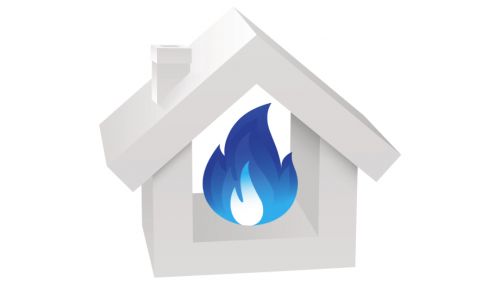All
AREE Presenters See Competitive Shift

Natural gas faces problems with pipeline projects, methane leaks and more
Changes in the U.S. oil and natural gas industries are chipping away at the price gap between heating oil and natural gas and creating new hope for petroleum marketers.
During a keynote address at the recent Atlantic Region Energy Expo, Thomas Tubman, Executive Director of the American Energy Coalition (AEC), and Alan Levine, CEO of the hedging firm Powerhouse, served up a refreshingly optimistic outlook for heating oil industry.
“I fully expect to see a smile on your face before you leave,” Tubman said in introducing their topic, Energy Independence Is the Gift That Keeps Giving. He pointed out that the oil industry has seen dramatic shifts in the last 12 months as U.S. oil production continued to increase and prices plunged to their lowest levels in five years. “What a difference a year makes,” he said.
While the U.S. industry oil is experiencing a renaissance, the natural gas industry is facing challenges that are eroding its competitive advantages, according to the AEC executive. Natural gas had gained a substantial price advantage over heating oil in recent years, and petroleum marketers had been hoping that natural gas would rise on a combination of increased demand and tighter regulation. It was a pleasant surprise when the price gap was narrowed by reductions in oil prices rather than natural gas cost increases, which are still expected.
Plentiful Supplies
It was a supply glut that drove natural gas prices down, and in the last 12 months crude oil prices have been similarly depressed by strong supplies, Tubman noted. While some regions are still seeing natural gas prices lower than heating oil, prices equalized in parts of New England last winter, and some commercial dual-fuel accounts switched back to heating oil.
Gas utilities not only saw their price advantage fade; they also encountered supply problems. Massachusetts utilities National Grid, Berkshire Gas and Columbia Gas imposed moratoriums on new natural gas hookups in some areas because they cannot get the gas they need to serve new accounts. “Those moratoriums are permanent until or unless Kinder Morgan gets the pipeline built,” said Tubman, referring to the proposed Northeast Energy Direct pipeline that would bring up to 2.2 billion cubic feet of natural gas to New England.
Natural gas supplies are constrained in New England because an increasing share of the supply is being used to generate electricity. As the states look to reduce greenhouse gas emissions, operators are retiring coal-powered plants and replacing them with natural gas-fired generation. In New England, natural gas now accounts for 46 percent of power generation, up from 15 percent in 2000. “The unintended consequence is an unsupportable gas load that is driving up the price of natural gas around very cold and very hot days and undermining grid reliability,” Tubman said.
With the flow of natural gas coming into the region already at capacity, the spot market price has spiked to record levels, according to Tubman. On January 22, 2014 the spot market price for natural gas in New York City hit a record high of $135/million BTUs, which was 30 times higher than the price in Pennsylvania on the same day. Increasing natural gas prices also caused the prices of electricity to rise by 27 percent to 54 percent in some areas.
Tubman acknowledged that U.S. natural gas remains plentiful but noted that natural gas producers are struggling to move gas from the wellhead to the user’s service line. “That is a big problem today, currently the natural gas industry’s biggest challenge, because not only are they having difficulty moving the gas to where it is needed, but these new pipeline proposals are being met with stiff opposition from landowners who could lose their land to eminent domain to site the new pipelines. They also face very stiff opposition from environmental groups opposed to the expanded use of any carbon-based fuels.”
Enviros Fall Out of Love
In addition to the pipeline issues, natural gas is coming under increasing scrutiny over the leakage of methane, a potent greenhouse gas, into the atmosphere. “The environmental lobby has begun to pay attention to the methane leaks and the dangers they believe are posed by these leaks to the environment,” Tubman told the audience. Leaks occur throughout the system, from production sites to distribution pipelines. The high volume of methane leakage, which has never been accurately quantified, prompted Cornell Professor Robert Howarth to issue a study suggesting that natural gas usage speeds the global warming process more than coal usage does.
Tubman noted that Google and the Environmental Defense Fund have teamed up to pinpoint natural gas leaks around the country, and one study has already revealed more than 3,300 leaks in the streets of Boston. Not only are those leaks putting natural gas in environmentalists’ crosshairs, they are costing consumers money. Utilities are generally allowed to charge ratepayers for “lost and unaccounted for” gas, and a study by U.S. Sen. Edward Markey (D-MA) determined that Massachusetts consumers paid $1.5 billion for gas they never received over a 10-year span. Pipeline operators also have no incentive to repair leaks because they do not own the gas they transport, Tubman noted.
Like the oil industry and its Keystone pipeline, the natural gas industry is facing fierce opposition to many of its pipeline proposals. “If they can’t build those pipelines, the natural gas won’t make it to market,” he added.
New Oil Realities
Powerhouse’s Levine also highlighted the profound effects that increased U.S. oil production has had on world oil markets. Producers are extracting nearly 9 million barrels a day, and the price of heating oil has fallen from $3.40/gallon to $1.90/gallon in just over a year. Oil prices have plunged before, Levine noted, but this decrease is different, because it is brought on by increased U.S. production.
The oil markets remain subject to intense volatility, but U.S. producers are using hedging tools to shield themselves from price cuts that could otherwise lead them to curtail production, according to Levine.
The increased U.S. supply means that prices will stay lower and the U.S. will be less dependent on foreign producers. The supply of biofuels is also improved, adding further protection against price increases, he said. “We have danced to the tune of OPEC, but that is no longer the case.”
Robust U.S. oil production probably benefited the U.S. during the “Arab Spring” uprisings in Egypt, Tunisian, Libya and other countries from 2010 to 2012. “If we didn’t have that production, where might prices have been?” Levine asked. “It probably would have been well north of $150.”
Price pressures have also been eased by increases in energy efficiency. “We have efficient cars now. Even the biggest gas guzzlers get 18 to 20 miles a gallon,” he said. “As we become more efficient, that reduces expansion of demand.”
Levine said he would like to see the natural gas industry held accountable for the pollution it generates, but the fact that gas dissipates in the air when spilled rather than accumulating visibly like oil is advantageous. “It has to do with public relations,” he said. “You can see oil, but you can’t see gas, so it’s hard to believe you have these problems.” He said the utilities have also done “a marvelous job of saying how good their product is and how lousy ours is.”
Related Posts
 The Possibilities of Renewable Propane
The Possibilities of Renewable Propane
Posted on March 13, 2024
 Propane Can Do That
Propane Can Do That
Posted on March 12, 2024
 Take Action and Take Control of Your Future at Industry Summit VI and Visions ‘24
Take Action and Take Control of Your Future at Industry Summit VI and Visions ‘24
Posted on March 11, 2024
Enter your email to receive important news and article updates.

